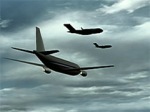By Debbie Hersman
On April 27, the NTSB held our 37th annual Employee Awards Ceremony to celebrate the achievements of our employees.
Sir Isaac Newton wrote, “If I have seen a little further it is by standing on the shoulders of giants.” That is how I feel about everyone who we recognized today. These award winners and their colleagues are the giants of the NTSB who enable my fellow Board members and me to see farther. Every time we give a briefing at an accident scene, conduct a public hearing, testify on Capitol Hill or do a host of other assignments to promote safety, we are standing on the shoulders of our dedicated and highly professional workforce.

Other employees who were recognized include:
Yvette Delgado, Legal Assistant and Hispanic Employment Program Manager, Equal Employment Opportunity Award
Zoe Keliher, Regional Air Safety Investigator, Regional Employee Award
William C. Love, Deputy General Counsel, Danny Raskin Memorial Volunteer Award
Kim Nguyen, Administrative Assistant, Distinguished Service Award for Administrative Support
Ruben Payan, Electrical Engineer Investigator in Charge and Railroad Accident Investigator, Dr. John K. Lauber Award
Jana Price, Senior Human Performance Investigator, Employee Peer Award
Jennifer Rodi, Regional Air Safety Investigator, Regional Employee Award
Candice Sheckleford, Management Support Specialist, Managing Director’s Award
Lorenda Ward, Investigator in Charge, Joseph Trippe Nall Memorial Award





